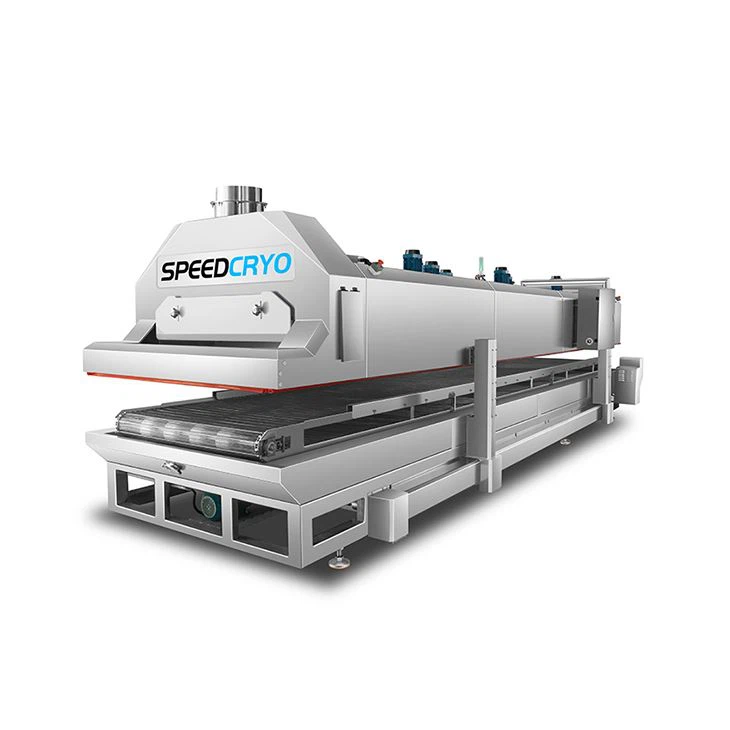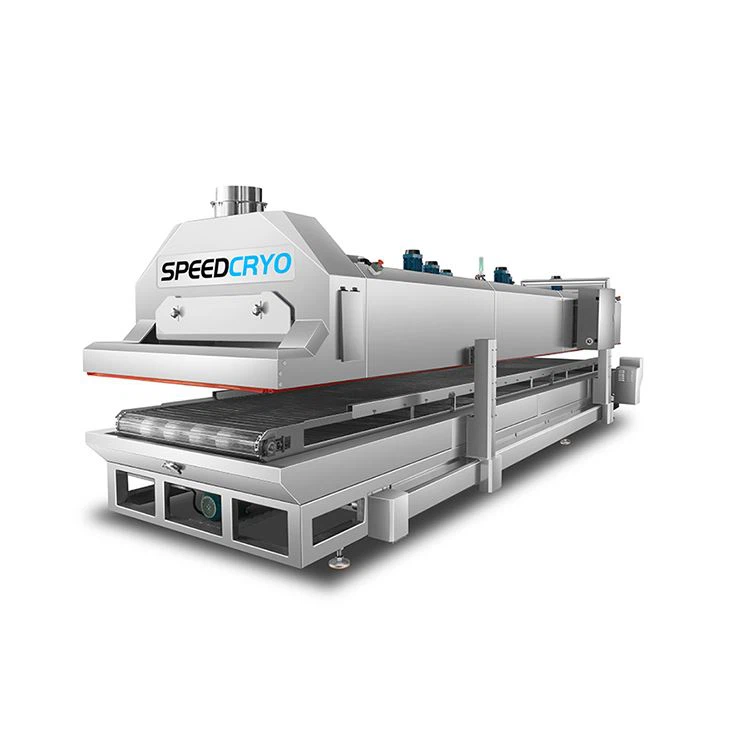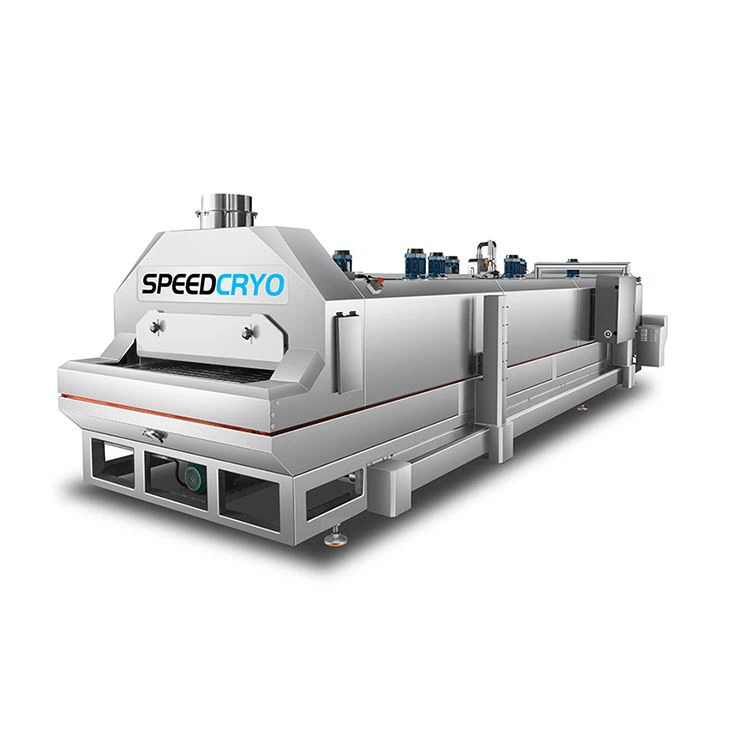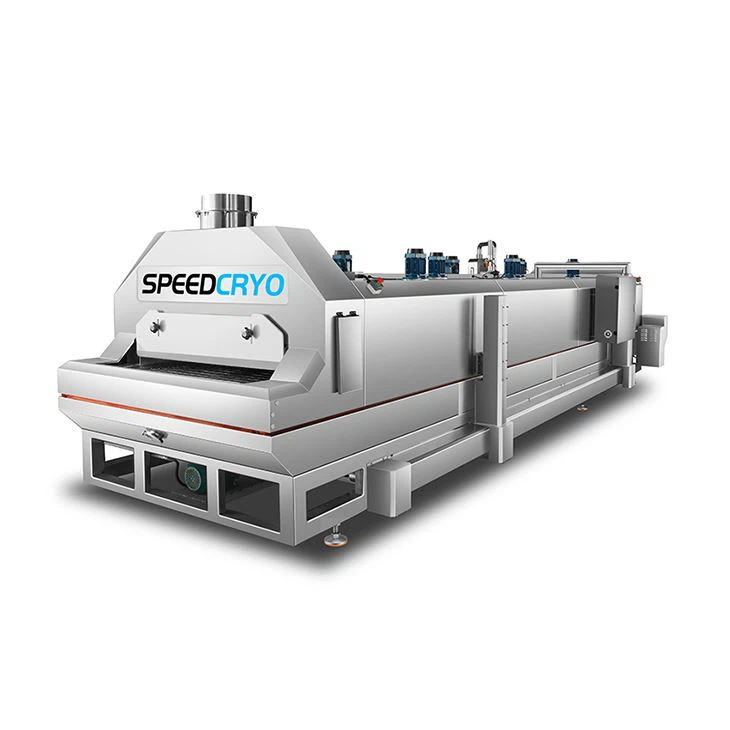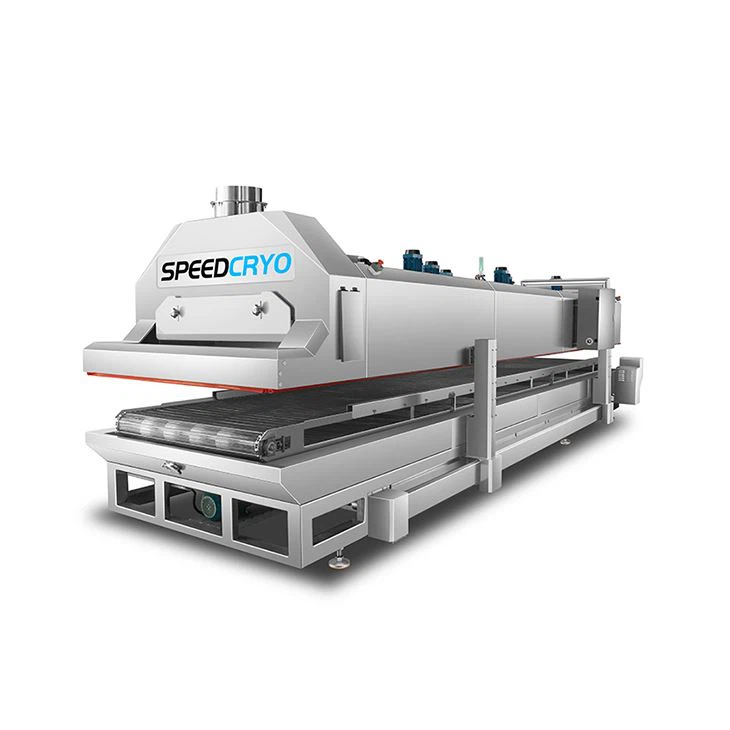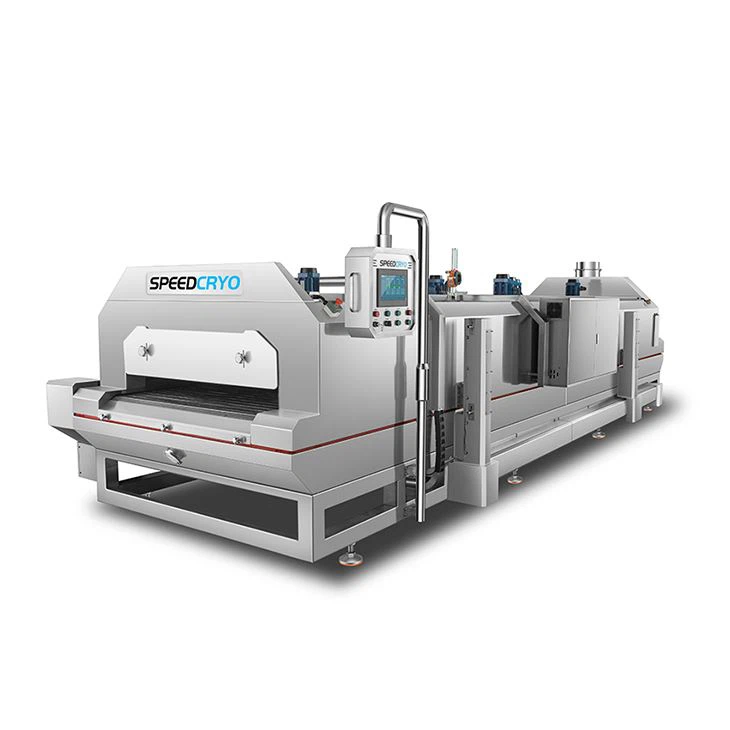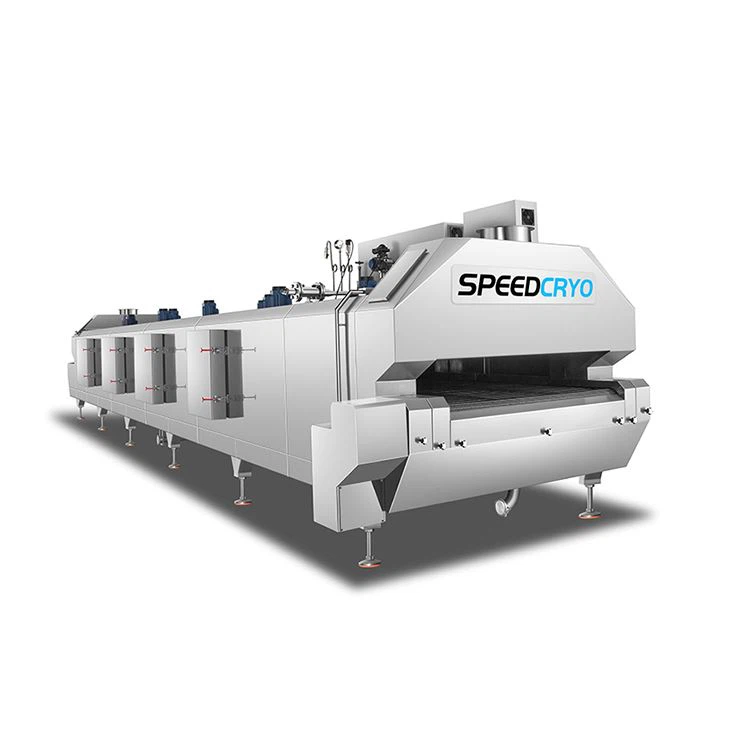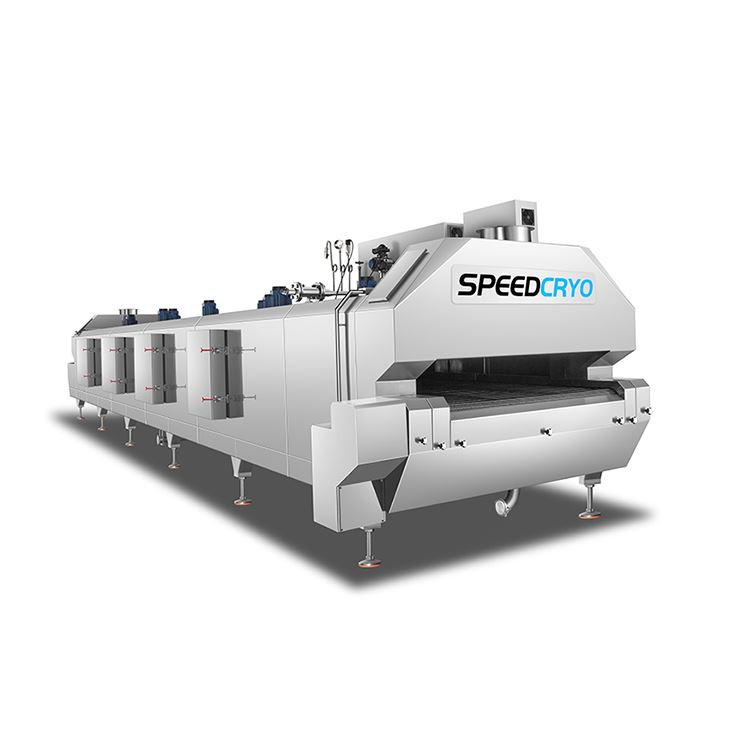Tunnel Freezer
The tunnel-type cryogenic freezer offers highest flexibility according to your processing volume. The tunnel length and conveyor belt can be fully customized to fit any kind of automatic processing line. With auto-lift function, it can be easily cleaned and maintained.
What Is Tunnel Freezer?
A tunnel freezer (also known as a freezing tunnel) is an industrial device designed to freeze products quickly and evenly. It consists of a sealed chamber into which the food products are placed. They move through the tunnel by means of a conveyor belt system. Inside the chamber, cold air currents are generated to freeze the food items in a very short time, ordinarily within minutes.
Advantages of Tunnel Freezer
Rapid
freezing
The probably biggest
advantage of a
tunnel freezer is
its ability to
achieve
exceptionally rapid
freezing rates.
Cryogenic
temperatures enable
quick heat transfer,
allowing products to
be frozen within no
time. This rapid
freezing not only
preserves the
quality of the
product but also
enhances efficiency
in production
processes.
Product
quality
Cryogenic tunnel
freezers ensure a
uniform and
consistent freezing
process, preventing
the formation of ice
crystals within the
product. This
preserves the
texture, flavor, and
nutritional content
of the items being
frozen, resulting in
a superior end
product.
Versatility
across
products
One of the strengths
of a tunnel freezer
using cryogenic
technology is the
adaptability to a
wide range of
products. Whether
it's vegetables,
meat, pasta,
seafood, or baked
goods, the
adjustable freezing
parameters make it
possible to
accommodate various
product types
without compromising
quality.
A tunnel
freezer has a
space-efficient
layout
Tunnel freezers are
typically designed
with a compact and
space-efficient
layout. This is
particularly
beneficial for
industries where
floor space is at a
premium. The
streamlined design
allows for easy
integration into
existing production
lines.
Reduced
downtime
A cryogenic tunnel
freezer is designed
for continuous
operation,
minimizing downtime
during production.
The rapid freezing
process allows for a
constant flow of
products through the
freezer.
-
Liquid Nitrogen Cryogenic IQF Instant Freezer*CE Certificatesread more
*Totally Safe and Non-toxic
*Precise temperature control
*Energy-... -
Meat Cryogenic Tunnel FreezerShrimp Tunnel IQF Freezer*CE Certificatesread more
*Food Grade SUS 304
*Extreme Fast Freezing
*Low Maintaining CostSmall IQF Machine*Ultra Low Temperature -196℃read more
*Whole Body SUS 304
*Instant Freezing Tunnel
*Easy O...Small Cryogenic Freezing Tunnel*Working Temperature 0 ~ -196℃read more
*High Frozen Efficiency
*Small Area Covered
*Low dr...Small Shrimp Tunnel Instant Freezeer*CE Certificationread more
*Famous Brand in China
*Good Thermal Insulation
*Convenient in M...Small Shrimp Tunnel IQF Freezer*CE Certificationread more
*China Well-known Brand
*Meet the Food Quality Control Standard
...Industrial Small IQF Tunnel Freezer*CE Certificationread more
*Economic Price
*Low Initial Investment
*Low Failure Rate
...Small Conveyor Flash Freezer*CE Certificatesread more
*Favorable Price
*Short Processing Cycle
*Environmental Protectio...Small Seafood Quick Tunnel Blast Freezer*CE Certificatesread more
*Satisfactory Price
*Hard-wearing Components
*Precisely Temperatu...Industrial IQF Tunnel Quick Freezer*CE Certificatesread more
*High Machining Efficiency
*Production Flexibility
*Wear-resistant C...IQF Individually Quick Frozen Machine*CE Certificatesread more
*Strong & Durable
*Food Grade SUS 304
*One-year Warranty
Why Choose Us
Our factory
Founded in 1993, SPEEDCRYO is a
leading provider of cryogenic food
freezing solutions, offering
comprehensive cold chain products
and services globally.
Advanced equipment
We provide a range of freezing
equipment to efficiently meet
clients' food processing needs,
including cryogenic cabinet freezer
and tunnel individual quick
freezing. These technologies and
equipment have been widely used in
meat and poultry foodstuffs, baked
products, fruits and vegetables,
aquatic products and various
prepared dishes.
Rich experience
With over 28 years of experience in
food quick freezing, we offer
comprehensive and innovative
cryogenic solutions.
Customized services
Our team of experts will work
closely with you to understand your
needs and will provide solutions
that are tailored to meet your
expectations.
Types of Tunnel Freezer
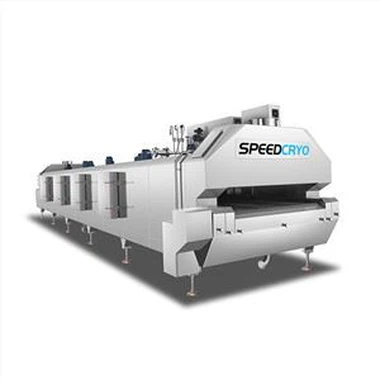
Single-belt tunnel freezers
Single-belt tunnel freezers use one continuous belt to transport products through the freezing tunnel. This design is ideal for smaller production lines and products that require uniform freezing.
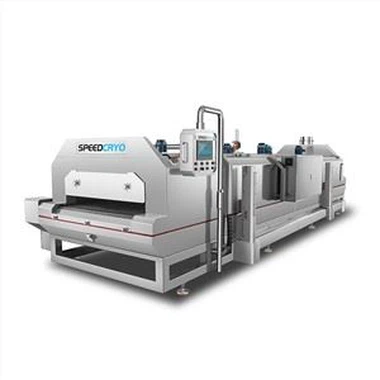
Multi-belt tunnel freezers
Multi-belt tunnel freezers feature multiple conveyor belts, allowing for higher production capacities. Each belt can operate at different speeds, accommodating various product types and sizes.

Spiral tunnel freezers
Spiral tunnel freezers utilize a spiral conveyor system to maximize space efficiency. This design is perfect for facilities with limited floor space but high production demands. The spiral configuration allows for extended freezing times without requiring a larger footprint.
Application of Tunnel Freezer
Frozen Food Industry
The frozen food industry uses tunnel freezers for quick freezing of a variety of products, from vegetables to meat and seafood.
Bakery Industry
Tunnel freezers are used to freeze dough, batter, and other baked goods to maintain quality and extend shelf life.
Pharmaceutical Industry
The pharmaceutical industry uses tunnel freezers to freeze and store medicines, vaccines, and other medical supplies.
Chemical Industry
Tunnel freezers are used for quick freezing of chemical products, including epoxies, adhesives, and resins.
Components of Tunnel Freezer

Conveyor belts
Transport products through the freezing tunnel.
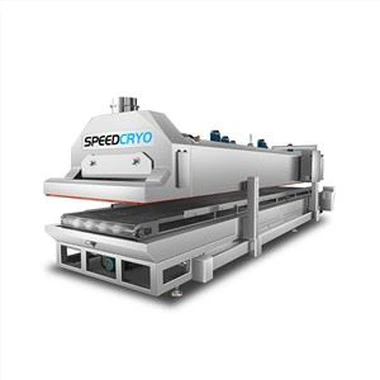
Refrigeration units
Generate the cold air needed for rapid freezing.

Control systems
Manage temperature and airflow to ensure optimal freezing conditions.

Insulated enclosures
Maintain the low temperatures required for efficient freezing.
Regular cleaning and
inspection
Schedule routine cleaning and
inspection of the refrigeration
system. Remove debris, ice buildup,
and any other contaminants that
might affect the efficiency of the
cooling or freezing process.
Inspect the conveyor belts, fans, and other moving parts for wear and tear. Replace or repair components as needed to prevent unexpected breakdowns.
Optimal temperature
control
Monitor and control the temperature
consistently to ensure that the
system maintains the required
temperature levels for efficient
cooling or freezing. Regularly
calibrate temperature sensors and
controllers to guarantee accurate
readings and prevent variations that
could impact the quality of the
processed food.
Proper lubrication
Keep all moving parts
well-lubricated to reduce friction
and wear. This includes conveyor
belts, fans, motors, and other
components undergoing continuous
motion. Only use lubricants
recommended by the system
manufacturer and adhere to the
specified lubrication schedules.
Efficient airflow
management
Optimize airflow within the tunnel
to ensure uniform cooling or
freezing of products. Proper airflow
helps maintain consistent product
quality and reduces the risk of
uneven temperature distribution,
especially in high-speed
“blast” systems where
temperature reduction is primarily
initiated through airflow control.
Regularly clean and inspect air vents and fans to prevent blockages that can impede airflow.
Scheduled maintenance
shutdowns
Plan scheduled maintenance shutdowns
to conduct more in-depth inspections
and repairs. This proactive approach
can help identify potential issues
before they escalate, minimizing
downtime and extending the
system’s lifespan.
Employee training and
awareness
Train personnel on proper operating
procedures and the importance of
regular maintenance. Well-informed
staff can contribute to the early
detection of issues and the
implementation of preventive
measures.
How to Choose a Tunnel Freezer
Capacity and throughput: When evaluating a tunnel freezer, it is important to evaluate the capacity and throughput requirements of the operation. Understanding the volume of product to be frozen and the required freezing speed will help determine the appropriate size and configuration of the freezer to meet production needs.
Freezing performance and uniformity: Freezing performance and uniformity of tunnel freezers are key factors in maintaining frozen product quality. The freezer’s ability to reach and maintain the required temperature throughout the freezing process must be considered to ensure consistent and high-quality results for a variety of food products.
Energy efficiency and operating costs: Energy efficiency is an important consideration when selecting a tunnel freezer. Look for refrigerators with advanced insulation, efficient airflow design and energy-saving features to minimize operating costs and environmental impact while maximizing freezing efficiency.
Maintenance and cleaning: Ease of maintenance and cleanliness of your tunnel freezer are important to ensure smooth operation and product safety. Choose a freezer with easily accessible components, hygienic design features and easy-to-clean surfaces to simplify maintenance tasks and maintain food hygiene standards.
Adaptability and flexibility: Companies should consider the adaptability and flexibility features of tunnel freezers to accommodate different product types and packaging formats. Multifunctional freezers can be adjusted to different production needs and product specifications, providing added value and versatility to operations.
Differences between a tunnel freezer and a cold store
Cold store and tunnel freezers serve the same purpose: To house and preserve products at low temperatures. However, there are significant differences in their design and operation.
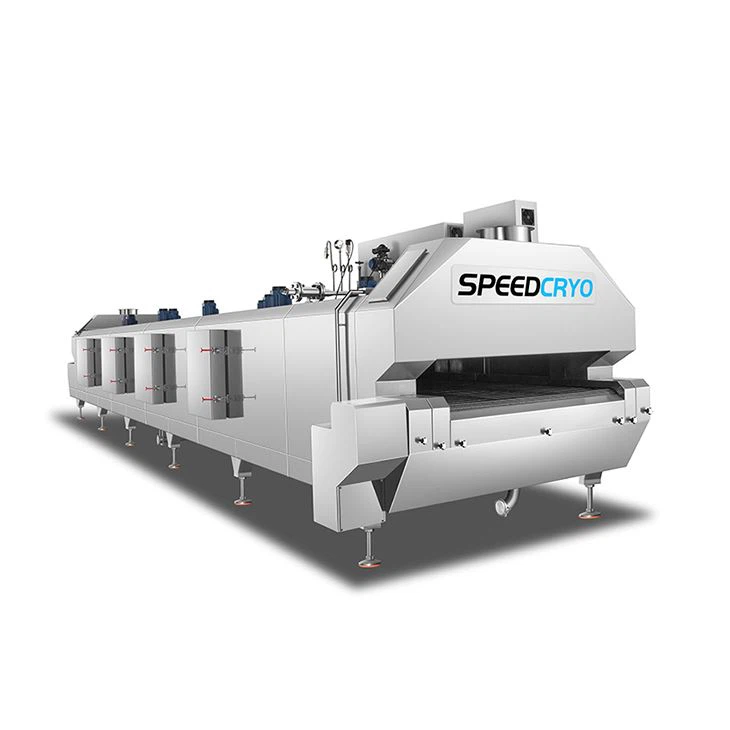
Freezing vs
temperature
maintenance
A tunnel freezer is used
to freeze goods rapidly,
taking them from ambient
to subzero temperatures
in a short period. In
contrast, the primary
function of a cold store
is to maintain products
at a low and constant
temperature —
usually above the
freezing point —
to extend their shelf
life and keep them
fresh.
Freezing vs
cooling
Tunnel freezers normally
operate at temps below
-1 ºf for rapid
freezing of goods. Cold
storage rooms, on the
other hand, tend to be
kept above 32 °f
(generally 32 °f to
41 °f, in line with
the products stored).
Short term vs long
term
Freezing tunnels are
designed to freeze goods
in a short period
— often in a
matter of minutes or
hours — as per the
product type and the
machine’s
capacity. Cold store
lend themselves more to
long-term storage since
they run at a constant
temperature, preserving
product quality.
Tunnel vs cold
store
Tunnel freezers are
long, narrow structures
through which products
are transported on a
conveyor belt or trays.
Cold store is typically
thermally insulated
rooms with cooling units
kept at a constant
temperature. Products
are stored inside the
room on cold store
racking.
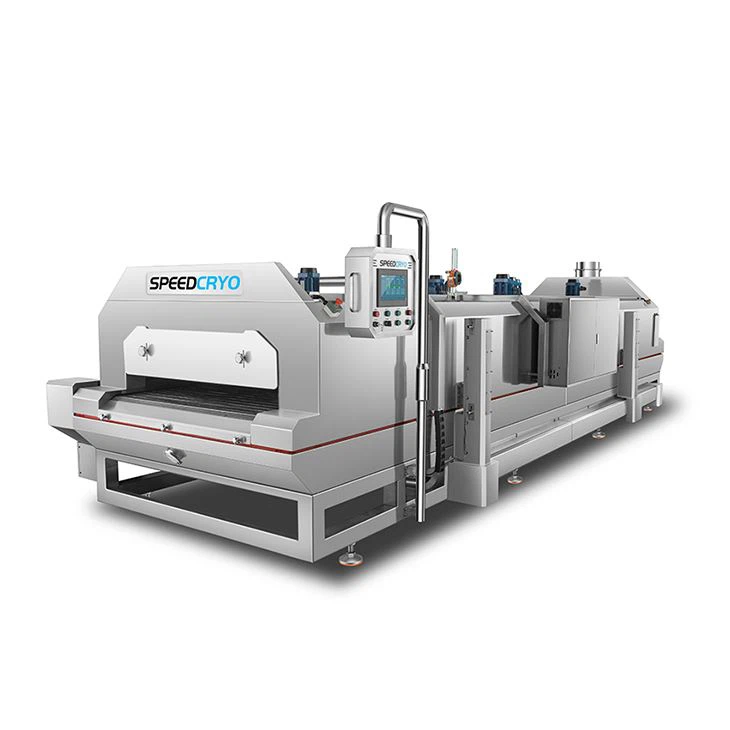
Design and Mechanism of Tunnel Freezers
Tunnel freezers typically consist of an insulated enclosure equipped with a conveyor belt system that transports products through a controlled freezing zone. The products enter at one end, progress through the tunnel where they are exposed to cold air or cryogenic agents like liquid nitrogen, and emerge frozen at the opposite end.
The freezing tunnel operates using precision-engineered airflow systems that ensure even temperature distribution. Through directed cold air, quick-freezing temperatures are achieved, reducing the likelihood of ice crystal formation that can damage the product’s cellular structure.
Cryogenic vs. Mechanical Freezing
Cryogenic Tunnel Freezers utilize
cryogenic liquids — primarily
liquid nitrogen or carbon dioxide
— to achieve rapid freezing. As
the cryogenic liquid comes into contact
with the products, it rapidly absorbs
heat, vaporizes, and freezes the
products quickly.
On the other hand, mechanical freezing involves circulating refrigerated cold air over the products to gradually lower their temperature. While not as fast as cryogenic freezing, mechanical systems are more common and can be cost-effective for certain applications.
Both methods aim to preserve product quality and extend shelf life, but they do cater to different requirements based on production scale, the temperature thresholds, and the specific nature of the products being frozen.
Our Factory
Founded in 1993, SPEEDCRYO is a leading provider of cryogenic food freezing solutions, offering comprehensive cold chain products and services globally. From industrial freezers to automated conveying freezing tunnels, cold storage room, and refrigerated truck, our 30 years of expertise empower food manufacturers and processors worldwide with cutting-edge freezing technology.
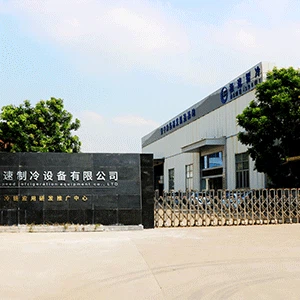
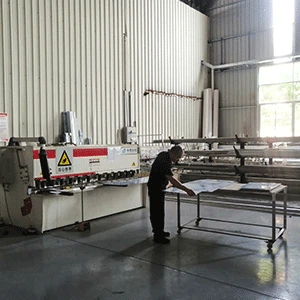
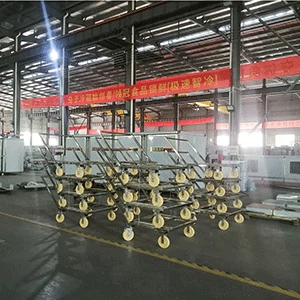
Our certificates
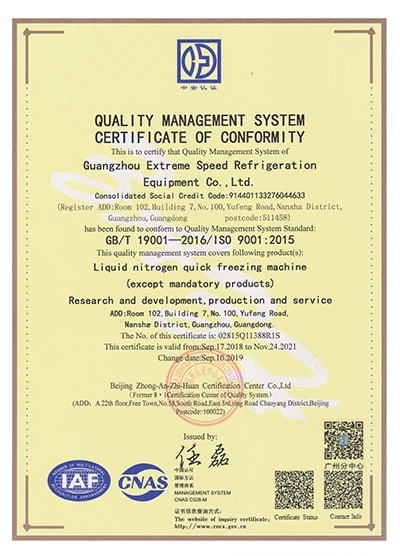
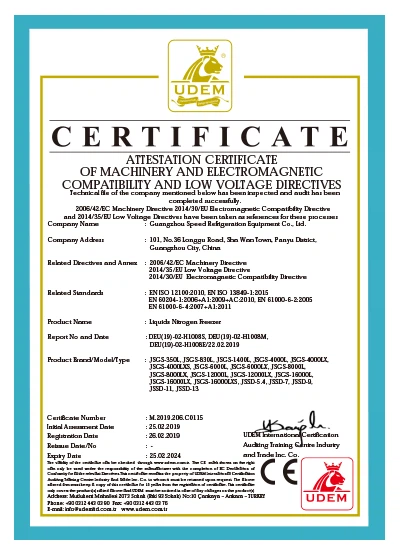
FAQ
We're professional tunnel freezer manufacturers and suppliers in China, specialized in providing customized refrigeration equipment. We warmly welcome you to buy or wholesale high quality tunnel freezer for sale here from our factory. For price consultation, contact us.
blast freezer for chicken, iqf instant freezer, liquid nitrogen iqf freezer

